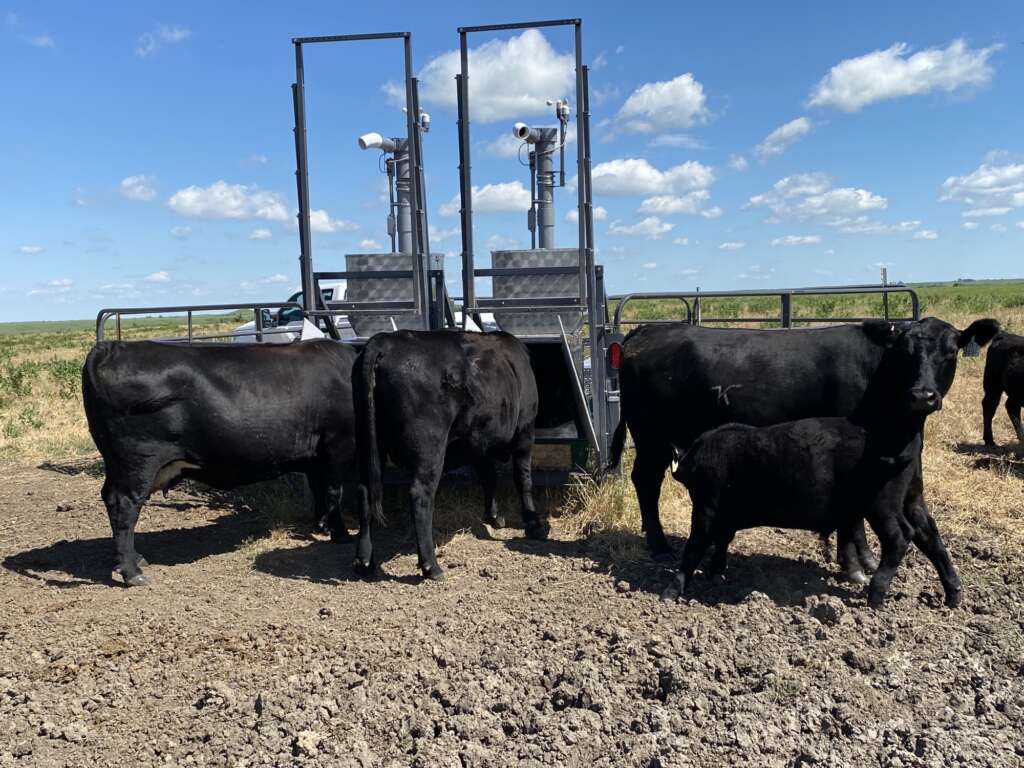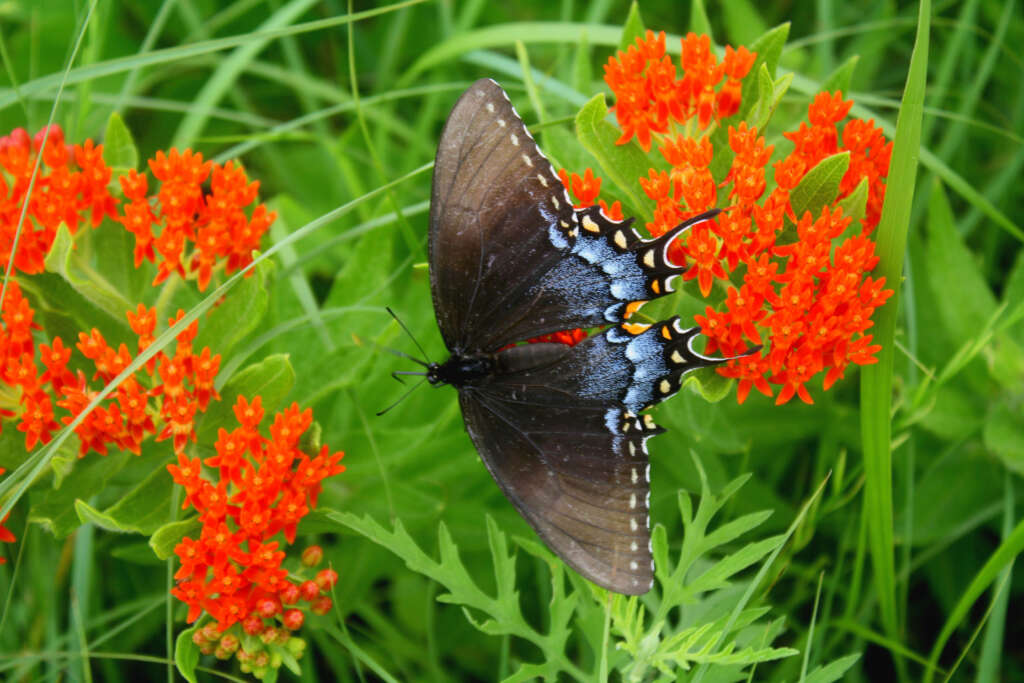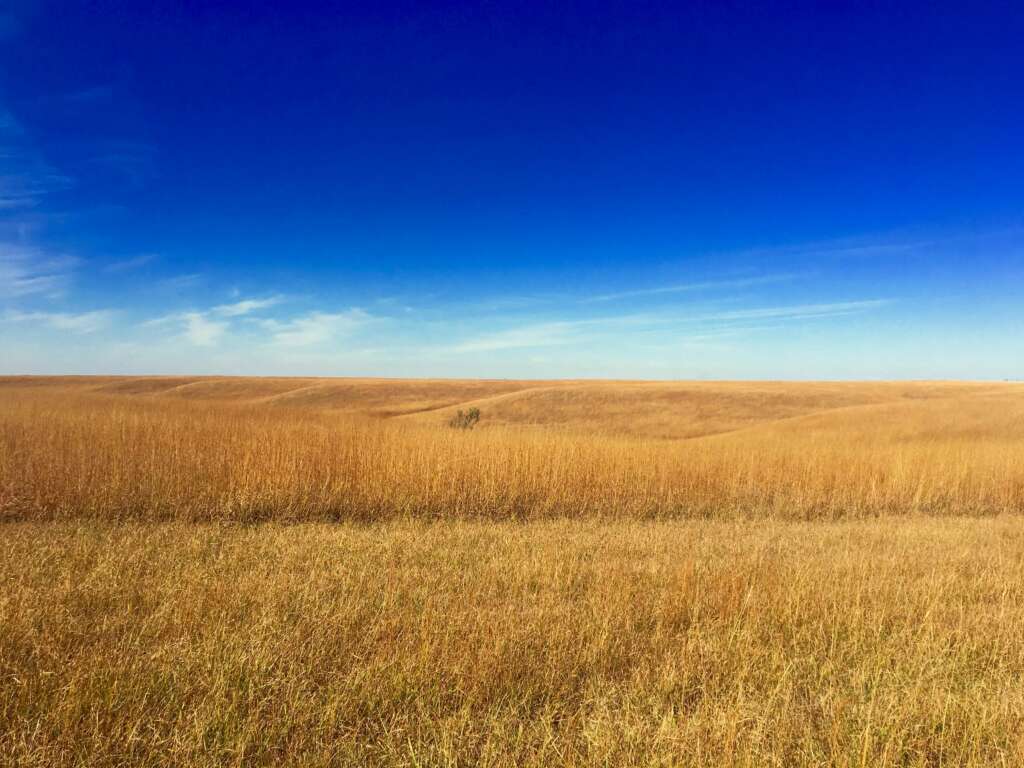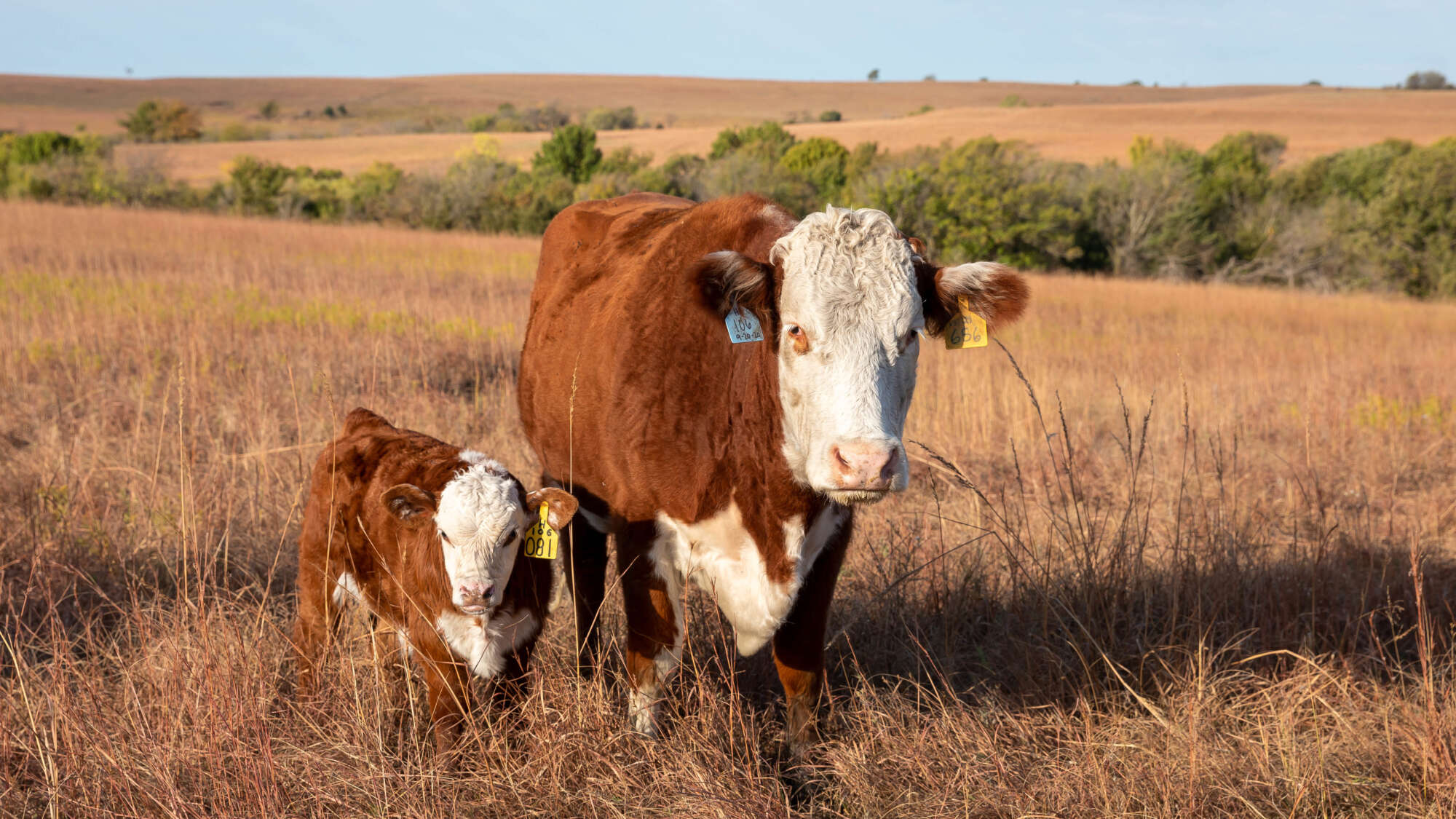K-State scientists look to reduce cattle’s methane production through genetic selection, creating a long-term benefit for the environment and cattle producers.
When it comes to greenhouse gas emissions, cattle get a bad rap.
Because they are the No. 1 agricultural source of greenhouse gases worldwide, many suggest we eliminate beef from our diet. But wait! You don’t have to give up your hamburger yet. Cattle and other ruminants account for just 4% of all greenhouse gases produced in the United States. And for beef cattle specifically, it’s just 2%.
Even though cattle are a small factor in total greenhouse gas production, scientists and ranchers are working to find ways to reduce the amount of methane cattle release into the atmosphere.
But is a win-win solution even possible? K-State researchers are rising to the challenge.
A win for all
K-State geneticist Dr. Megan Rolf and her graduate students are in the process of discovering if low methane production is a trait that could be passed on to future generations of cattle.
Rolf and her team are utilizing a machine that measures the carbon dioxide production, oxygen consumption and methane production in pasture-grazing adult cows.
“We can use that information to develop a prototype genetic evaluation for methane production. This is important to producers because higher methane output means a loss of energy from the feed they eat that could instead be going to meat and milk production,” she said. “And it’s important for all of society to lower greenhouse gas emissions. So, it’s a win-win for beef producers and for the environment.”
A long-term solution
A lot of work has already been done on reducing cattle’s emissions, but unlike Rolf’s research that focuses on genetics, this other research has focused on feed additives. Scientists at UC Davis have discovered that by adding just 1% of seaweed to dairy cattle’s diet, the cow’s methane emissions were reduced by up to 60%.
Rolf’s team is looking for a solution that may take longer to create but will also have a more permanent outcome. Once they develop the selection tools for low-methane production, producers can add that to a list of factors — fertility, productivity — that they already consider when breeding their cattle.
“Producers will want to consider selecting for this trait because the energy that goes into methane production that gets belched out into the air is energy that is not being used by the cow for reproduction, tissue synthesis or milk production,” Rolf said. “So having animals that are genetically predisposed to turn their feed into energy for their own benefit instead of methane production, means cost savings for producers. And it’s better for the environment.”
How cattle can help the environment

Efficiency. Better breeding, genetics and nutrition have increased the efficiency of cattle/beef production in the U.S. In the 1970s, 140 million head of cattle were needed to meet demand. Now just 90 million head are required, and these 90 million cattle are producing more meat.

Restoration. Cattle help restore and maintain healthy pastures. Several studies have shown that grazing in grasslands improves the ecosystem by increasing native grasses, which helps birds, butterflies and other species, reduces fire hazards and mitigates damage from drought.

Lowering carbon dioxide. Healthier grasslands mean plants with longer roots. The longer and denser the roots of plants, the more atmospheric carbon they can hold in the soil. According to Project Drawdown, 16 gigatons of carbon dioxide could be sequestered in grasslands by 2050.
To support the Department of Animal Sciences and Industry, click here.
Animal Sciences and Industry Excellence Fund (D22452)
